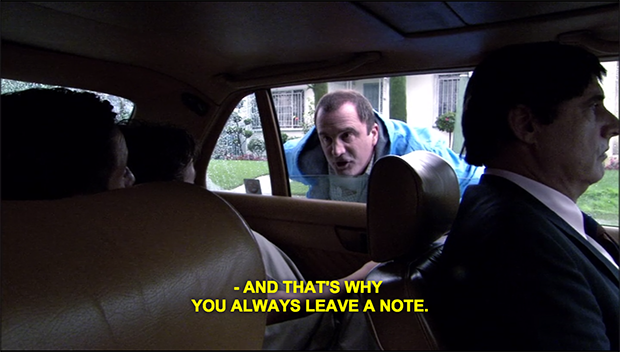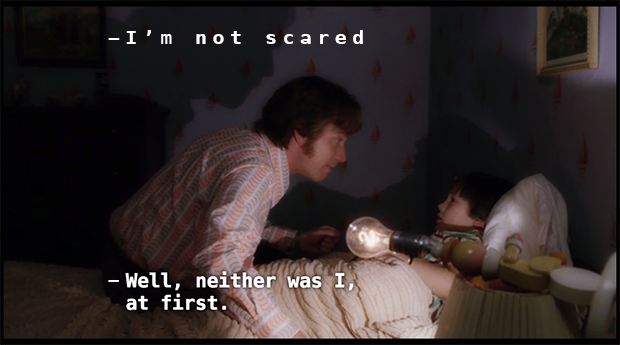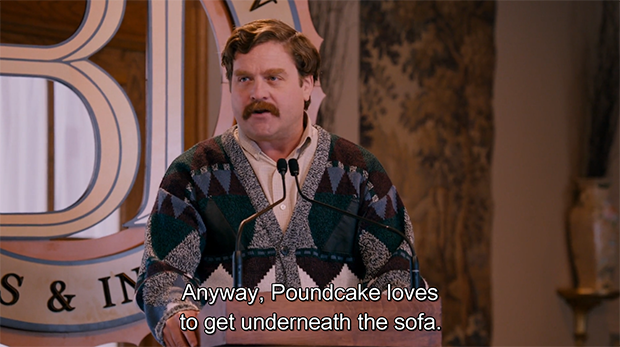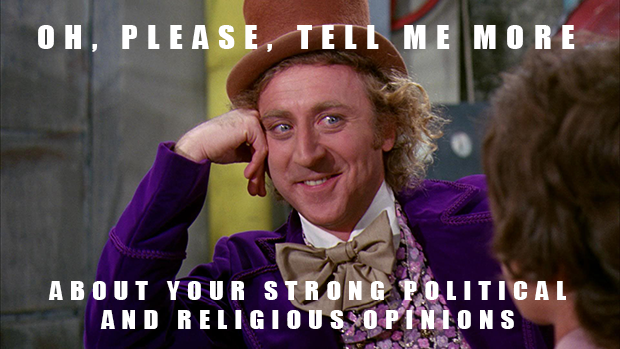Stories are the lifeblood of community. They are how we humans have evolved to share our values, contextualize our place in the cosmos, and connect on a deeper level with other human beings.
An anecdote is nothing more than a simple story. The kind that every single human being on Earth tells on a daily basis.
When we share a memory from our childhood, tell our friends about something that happened at work, recall an important lesson learned–these are all instances of anecdotal storytelling.
Because of the ubiquitous nature of anecdotes, the average person doesn’t spend very much time thinking about “the craft of storytelling” when they want to share one–they just do it.
However, as you will discover in this post, there are at least five simple tips that we can follow to improve one of the most common social interactions in our everyday lives.
5 Simple Tips for Telling Better Anecdotal Stories
Before getting into my storytelling tips below, I’d like to note that I’m not claiming this to be the definitive method of telling anecdotal stories–but it is one of many proven methods.
I call it the folk tale method. Meaning it draws on simple, straightforward values or morals to center a story and unfold the narrative from there.
There are other valid methods used widely in popular culture. Such as the “talk show anecdote” or “stand-up anecdote” which don’t really concern themselves too much with telling complete stories as setting up and delivering jokes. Both are great conversational tools to have at your disposal and perhaps I’ll elaborate more on these anecdotal formulas in the future.
In the tips below however, I chose to focus on what I believe to be the five main tips one should follow for great anecdotal storytelling in everyday conversations, toasts, commencements, and the like.
Let’s get into it!
1. Clearly Define the Stakes (And Connect Them to a Value)

In any interesting story the parties involved stand to gain or lose something. Without this element, whatever anecdote you’re sharing can easily come across as boring or pointless.
This doesn’t mean you have to lie or stretch the facts though. Often, it simply means understanding why you’re telling a specific story in the first place and arranging your thoughts accordingly.
When defining why, think of a value or something to be valued. Such as loyalty, friendship, the importance of showing up on time, etc. Then connect the exercise of that value (or the lack thereof) to the stakes of your story.
When you connect stakes with value, the framework of your story will start to emerge all on its own.
An Example
You’re having a conversation with some friends and someone makes a comment about how predatory the local parking authority is.
You agree and decide to share a short anecdote about an incident (or two) in your past that reinforces this assertion and proposes an appropriate value response that helped you escape these unfair practices.
You now know going into your story that the framework is this:
Initial Assertion: The parking authority is predatory.
Value Response: Being aware is important; of their behavior, the time on the meter, the status of your tags, your rights with the city, etc.
Reinforcing Scenario: Here is a situation that proves my initial assertion that the parking authority is predatory; one where I paid the consequences of not being aware.
The stakes in this scenario are the consequences you had to face. Could be losing your car for a day at the impound and the associated fine. Could be something else.
Value Asserting Scenario: Here is a second situation that also proves the initial assertion, but this time I acted differently. I made being aware of this organization’s practices a priority and came up with a plan to foil their customary traps. As a result I avoided the negative consequences that I otherwise would have endured.
To further drive your point home (and make things even more interesting), you may choose to compound the stakes in your second scenario by not only risking the impound and the fines, but by also running the risk of being late for an important job interview or date. All of which you escaped, through the exercise of your chosen value.
Recap/Payoff: The “lesson” or “moral” of your story is being aware is important. It saved me time, money, and bunch of bureaucratic headaches with the parking authority–on top of that, I didn’t miss that first date and now I’m married to the love of my life!
Now that you have a framework–built on an initial assertion, with interesting stakes, and a relevant value–you’ve got the makings of a great anecdotal story on your hands. Follow the remaining tips below to drive it all home.
2. Start In The Action

When beginning a story, many of us are tempted to spend a little bit (or a lot) of time giving unnecessary introductions that qualify our story into oblivion.
Contrast these two openings:
“I’m a journalist. I often have to wait for my clients–magazines, mostly–to call me with my assignment. One day I was waiting with a friend who also happens to be my lawyer. We were having drinks at a hotel bar when I got an assignment to go to Las Vegas and cover a desert car race. Drunk as he was, he thought the whole things sounded fishy and advised he come along. So naturally we rented a red convertible, bought a lot of drugs, and set out for the job.”
Pretty boring, right? The only part that begins to get interesting is the part about renting a convertible and buying a lot of drugs to begin a job. So why not start with that? And instead of simply stating it, why not get to the good stuff: how it felt in the moment and the obvious danger that involves?
That’s what Hunter S. Thompson did to open his book Fear and Loathing in Las Vegas and it’s one of the most magnetic first paragraphs I’ve ever had the privilege of reading.
“We were somewhere around Barstow on the edge of the desert when the drugs began to take hold. I remember saying something like “I feel a bit lightheaded; maybe you should drive…” And suddenly there was a terrible roar all around us and the sky was full of what looked like huge bats, all swooping and screeching and diving around the car, which was going about a hundred miles an hour with the top down to Las Vegas. And a voice was screaming: “Holy Jesus! What are these goddamn animals?”
Most of the facts in the first version I wrote are actually in the following paragraphs of Fear and Loathing. But by starting with them in order to “set everything up”, I actually took an interesting story and made it unbearably boring.
Start in the action, work everything else in as you go.
3. Avoid Getting Hung Up On Unimportant Details

How many times have you heard (or said) a variation of the lines below?
“It was early on a Monday morning when we discovered a strange smell coming from under the door across the hall. Wait, no. It was a Tuesday. It was early on a Tuesday morning. Hold on. That’s not right either. Honey! Was it a Monday or a Tuesday when–“
AHHH! Stop!
The answer is: it doesn’t matter.
Unless you’re establishing a timeline for your alibi in a murder investigation, don’t sweat these types of small details. If you know them, fine. If you can’t recall, don’t try to figure it out on the fly. These details are rarely what the story is about anyways.
When you’re sharing an anecdote about something that happened to you as a kid, no one cares if you get the day, week, month or even the year right.
Just tell the story!
(Can you tell this one doubles as a pet peeve of mine? Speaking of which…)
4. Avoid Rants & Essays

There are some cases in which a good ol’ rant or verbal essay is appropriate. YouTube, your blog, a political rally, therapy, and the lecture hall all come to mind.
But in those instances a special place and time has been set aside for these things to occur. They tend to go over a little less favorably around the dinner table, at a wedding reception, or over drinks.
So unless your goal is to polarize, embarrass (in a bad way), or bore your audience try not to get diverted from a good story into these tempting (but less enjoyable) modes of communication.
You may be surprised at how many awkward situations you “magically” avoid. And how often people begin to ask you to recount your interesting and insightful experiences.
5. Have a Clear Ending

A good, clear ending does one very important thing: it provides closure.
Without satisfactorily wrapping up the loose ends of a story, or letting it meander to a stop in the middle of nowhere, you risk leaving your audience feeling cheated out of their time and attention.
If you don’t have all of the answers, which is bound to happen in life, that’s ok. Try ending your story with the details that you do have and a provocative question. Or even create an alternate ending that provides hypothetical closure that the group can then discuss or dove tail into another topic.
BONUS TIP: Write It Out
More often than not anecdotes are shared orally in the course of everyday conversation. As a result, the first several times you try to apply the above tips it’ll probably be on the fly.
You’ll be thinking about your story, these tips, whether or not you’re any good at storytelling, what your audience will think, blah, blah, blah.
A bunch of negative, useless noise.
Instead, take some time in the near future to journal a bit. Dust off a few of your favorite anecdotes and write them out. Then edit them according to the tips in this post. You’ll most likely find that your stories gain a new level of clarity, tension, and fun.
You now have a new template for old favorites!
When you tell these stories again in the future–as part of a wedding toast, a job interview, over drinks, etc.–this more thought-out version will be the dominant one in your mind. It will come to you easier and your story will be more likely to achieve the desired effect.
The more you do this exercise–both writing your anecdotes out and re-telling them–the better they will get. And the better storyteller you’ll become in general.
Wrapping Up
When you’ve internalized these storytelling tips, all of this will happen unconsciously in a matter of seconds (or less).
An idea for a story will pop into your head and before you know it, you’ve constructed a framework of stakes and values, chose an interesting action filled place to start, picked out only the most important details to get your point across, avoided getting into academic or polarizing modes, and have a clear ending in mind.
All before you open your mouth.
Or, if you’re like me on most occasions, shortly thereafter.
Your Turn!
I hope you enjoyed these tips. If you have anything to add or thoughts to share please take a moment to leave a comment below.
Additionally, if you have an anecdote that you’d like to dust off and share with the community, leave it as a comment and I’ll post my favorites (with credit of course!) under the stories category here on my blog in the coming days.
—
Image credits in order of appearance: Rajesh Loganathan, Arrested Development, Big Fish, The Campaign, Willy Wonka and the Chocolate Factory.

Very good article – You should really write out that parking attendent story. I am left wanting to see your advice “in action” with the scenario you presented.
Thanks Hannah, that’s a good idea. In the meantime I’d highly recommend checking out a podcast called The Moth for tons of great anecdotal storytelling examples :)
https://itunes.apple.com/podcast/the-moth-podcast/id275699983
Hi Nathan!
I liked the article and shared this link with other storytellers I know.
Thank you.
This was extremely helpful! Hopefully, as I move from being a “life long learner” to incorporating more doing I will be able to employ these helpful tips.
Wow, fantastic blog layout! How long have you been running a
blog for? You make blogging look easy. The entire look of your web site is
excellent, let alone the content material!
Thanks Bart, I appreciate that. I’ve been blogging for about 10 years professionally. Though I didn’t make that good of a living for the first six or so lol.
I do believe all of the ideas you’ve offered on your post.
They’re very convincing and will certainly work. Still, the posts are very quick
for novices. Could you please lengthen theem a bit from subsequent time?
Thank you for the post.
Hey! Thanks for sharing this post. Mostly, when people are sharing such stories or every day experiences, they don’t focus much on these details and how they’re opening or closing the story. However, if you want to keep your friends or audience interested, these tips are actually very useful. Capturing audience’s interest isn’t easy, and dragged stories might even make them frustrated or annoyed.
I find it fascinating that there is so much interest in this topic. Being a senior citizen I have heard and told many stories which I now know that most of them were anecdotal. This has led me to create a site where such can be shared with others. I hope that many of us can work together to be able to tell what stories and anecdotes we would like to be remembered as we share with like-minded people.
Thanks for the good work, very informative and encouraging.
W Hollingsworth
Was looking for some takes regarding this topic and I found your article quite informative. It has given me a fresh perspective on the topic tackled. Thanks!
I agree with every factor that you have pointed out. Thank you for sharing your beautiful thoughts on this.
Thanks for the 5 tips! I love the way you build the blog, great job.